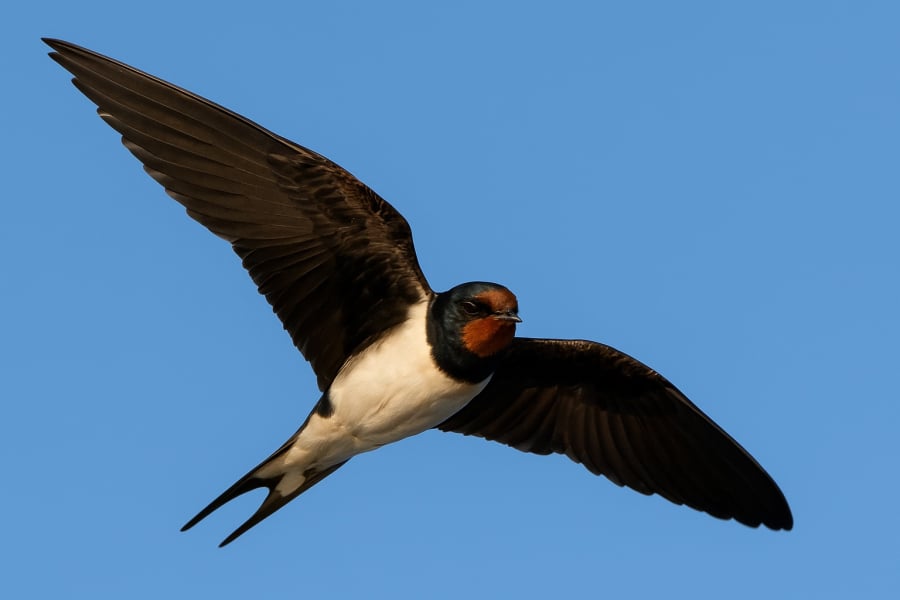When Sleep is More than Just Rest
We often associate sleep with our bodies being at rest. But in the wild, this is sometimes a “luxury.” Some bird species, such as albatrosses, swallows, and frigatebirds, fly thousands of kilometers over oceans without a single stop. And amazingly, they manage to sleep mid-flight.
A study published in Nature Communications equipped frigatebirds with headgear to measure brain activity. Results showed that these birds can sleep while flying, taking short naps of a few minutes each, mostly in a “unihemispheric slow-wave sleep” state – where one brain hemisphere rests while the other stays alert to control their wings and navigation.
“It’s a strange but highly effective evolutionary ability. These birds have learned to compromise between survival and rest,” says Dr. Niels Rattenborg, a sleep neurologist at the Max Planck Institute for Ornithology, according to ZingNews.

Soaring for Miles, Dreaming All the While
Not all birds possess this extraordinary ability, which is more common in migratory or seabird species. Frigatebirds, for instance, can fly non-stop for up to 10 days, crossing the vast Pacific Ocean without any islands to rest on.
When traversing such areas, sleeping mid-flight isn’t just a skill – it’s their lifeline. A National Geographic study recorded small birds like swallows migrating from Northern Europe to Africa, flying non-stop for over 6,000 km in 3 weeks without any breaks.
Sleep during flight is neither deep nor long, but it’s enough to sustain their health for the long journey – nature’s way of “energy conservation.”
Sleep that Picks its Moment
Interestingly, birds don’t sleep randomly. They only sleep when it’s safe, usually when there are no strong winds or when they don’t need to change altitude. Some species even prefer to sleep while flying in groups, keeping a lookout for one another.
Unlike humans, bird sleep is a “survival strategy” refined over time. The further they migrate and the harsher their environment, the more they develop this flexible sleep ability.
“This is a vivid example of how animals evolve to survive in unimaginable conditions. When they can’t stop, they find a way to recover,” says biologist Nguyen Thi Hanh from the Institute of Ecology and Biological Resources, as quoted by VnExpress.

Lessons from Tired Wings
Witnessing the sleeping patterns of these birds, many of us realize that rest doesn’t always mean coming to a standstill. Sometimes, we can continue our journey, moving forward – but with a calmer mindset, allowing ourselves to recover gradually.
Many young people today live hectic lives, constantly racing against time, and only sleeping when they collapse from exhaustion. Perhaps, instead of trying to “stand still,” we should learn to rest while in motion, knowing when to “sleep with half our brain,” so that life continues without wearing us down.
Conclusion: Nature’s Whisper of Wonder
Birds sleeping on the wing are a testament to nature’s incredible adaptability. Under the wide-open sky, where there’s nowhere to land, sleep still finds a way – even if it’s just for a moment.
Perhaps the true wonder isn’t that they sleep while flying, but how nature always finds a path to endure, to continue, and to soar. And we, humans on the ground, can also learn to fly, not with wings, but with faith in our ability to adapt and thrive.






























